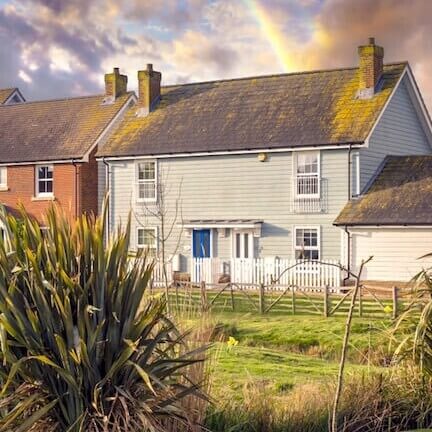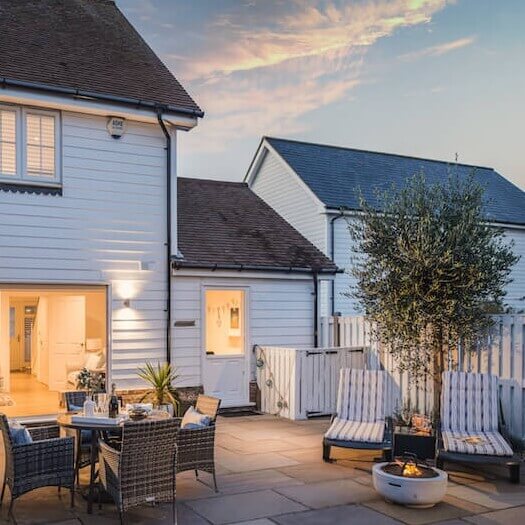
Welcome to 1066 Country
1066 country, the corner of East Sussex where a monumental battle famously reshaped the nation, boasts a classically beautiful English landscape infused with an epic sense of history.
What is 1066 Country?
A landscape of moated castles, steam railways, picturesque seaside towns and steep-cobbled streets, this is 1066 country. Scenes overlayed through the passing centuries that today survive in composite to create the archetypal image of England. An England which, hundreds of years ago, had its fate decided here in this beautiful coastal pocket of East Sussex, where an Norman invasion force successfully landed on these shores and won a famous victory, forging a new nation and forever changed the course of this countries history.
In 1066 Country you’re surrounded by countryside and coastal reaches so abundant with the historical evidence of the past thousand years, it’s impossible to imagine how this country may have evolved had Harold Godwinson, later to become Harold II, the last Anglo-Saxon king, won the battle of Hastings on the 14 October 1066, a date since etched into the national consciousness. As it was, the day and the crown belonged to William the Conqueror, Duke of Normandy.
1066 Country Today
Thankfully 1066 country today, ringing with the history of events born from perceived betrayals and false promises, never disappoints its guests. 1066 country offers its visitors a countless array of famous historical sites and crumbling fairytale ruins of ancient castles. Immaculate country houses set in magnificent gardens are scattered across a backdrop of rolling fields dotted with sheep and woodlands intersected with steep-banked lanes that weave their way through tiny hamlets and charming villages. To the south lies the region’s coast, encompassing the towns of Bexhill, Hastings and England’s prettiest town, Rye, cradled to the west by the chalky bolster of the South Downs. This is soon to become a national park and bracing walks along gorse-lined ridges provide sweeping sea views to rival those of the raptors riding lazy circles in the thermals above.
1066 Country Coast
It’s easy to lose hours roaming around the many picturesque 1066 country towns such as Rye. However, when the hill climbing finally takes its toll the perfect antidote lies just a couple of miles away to the edge of 1066 country at the majestic Camber Sands. Here the cobbles and shingle that define the beaches of the south-east coast finally give way to a beautiful broad tract of unspoilt sandy beach and sheltering dunes.
Beguiling as the 1066 country coast may be, neither the region’s beauty or its history diminishes as you journey inland. While Rye may have had its adopted son in Henry James, one of 1066 country’s most passionately patriotic literary exponents also made his home in the countryside of this special part of East Sussex, where he composed this most appropriate piece of poetry:
England’s on the anvil – hear the hammers ring –
Clanging from the Severn to the Tyne!
Never was a blacksmith like our Norman King,
England’s being hammered, hammered, hammered into line
So goes the first verse of The Anvil, a poem in praise of the forging of a unified English nation under William The Conqueror, written by an author born nearly 800 years later, in 1865 – Rudyard Kipling. His family home of Bateman’s, situated here in 1066 country, just outside the delightful village of Burwash, is now owned by the National Trust and remains the essence of the pastoral idyll safely hidden at the heart of the Empire.
Countryside and Castles, 1066 Country
The perfect solution to enjoying the countryside at the heart of 1066 country, in a manner that Kipling would surely have approved, is a journey on the Kent and Sussex Steam Railway. As the country’s finest example of a light rural railway, you can even dine during your journey in restored Pullman Cars, drinking in the view through the puff of steam as the line travels through the unspoilt Rother Valley to terminate at Bodiam, the location of one of England’s famous ‘fairytale’ castles. Bodiam Castle, with its beautifully preserved and spectacularly turreted quadrangular walls, built in 1385 rising from it’s broad moat, provides an image that has become the personification of an English medieval castle.
Another spectacular 1066 country moated castle can be found at Herstmonceux, situated north west of Hastings. Constructed in 1441, Herstmonceux Castle became the temporary home to the Royal Greenwich Observatory shortly after the Second World War in a bid to avoid London’s increasing light pollution. The observatory moved again, this time to Cambridge in 1990, yet the legacy of its six working telescopes survives, with three still open for guided evening observations.
With the telescope such as the one housed at Herstmonceux, you wonder if King Harold would have been able to see what was in store for this island, long before that fateful arrow struck its mortal blow. But it is impossible to imagine how different 1066 Country would have been, had the tables been so easily turned on that monumental day.
One thing, however, that would doubtless have remained the same is the timeless beauty of the 1066 country landscape – but whether 1066 country would still contain one of its most recent Gallic-influenced attractions, the profusion of small award wining vineyards that have sprung up in recent years among the hop fields, we can only guess.




[…] stately homes, castles, ancient port towns and Norman ruins scattered across coast and countryside, 1066 Country is one giant museum. It heaves with history and heritage and there are historic mementos around […]